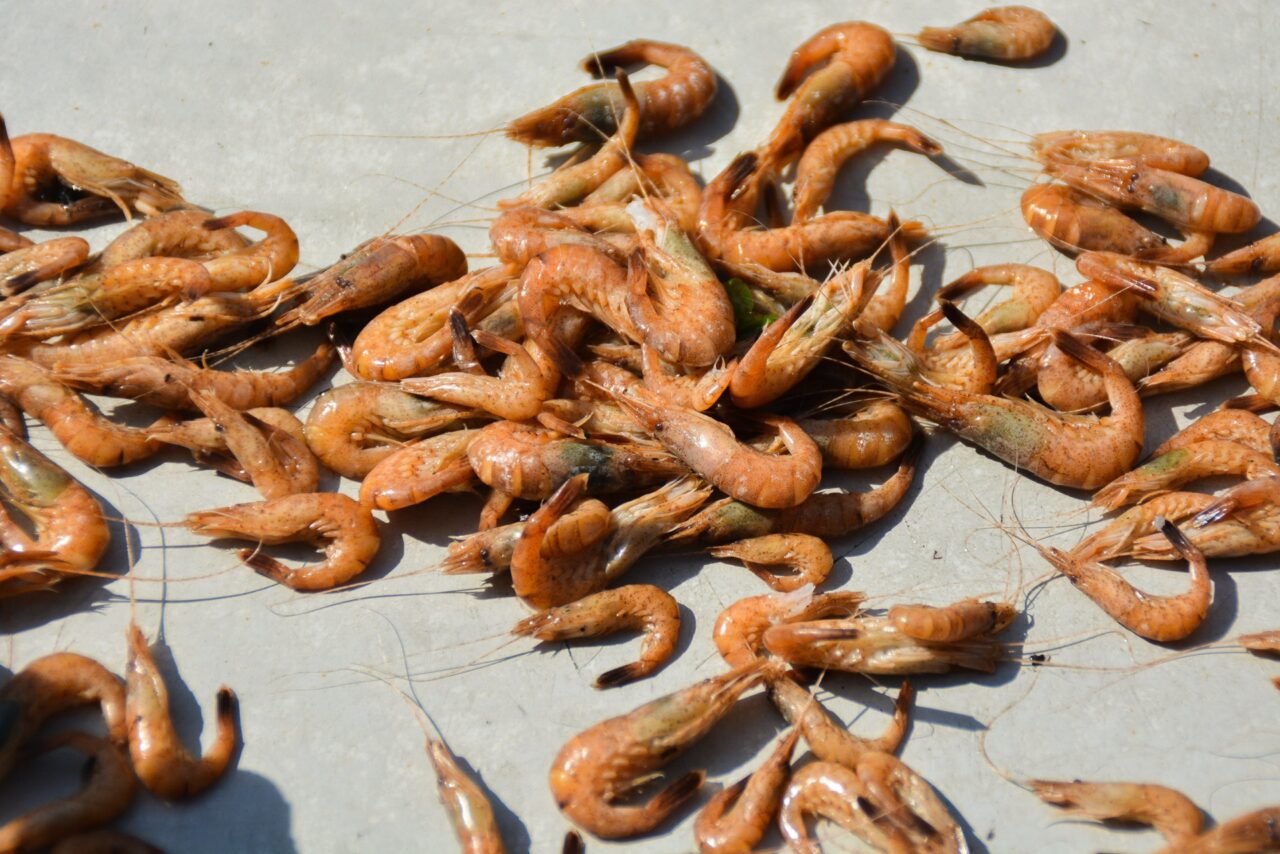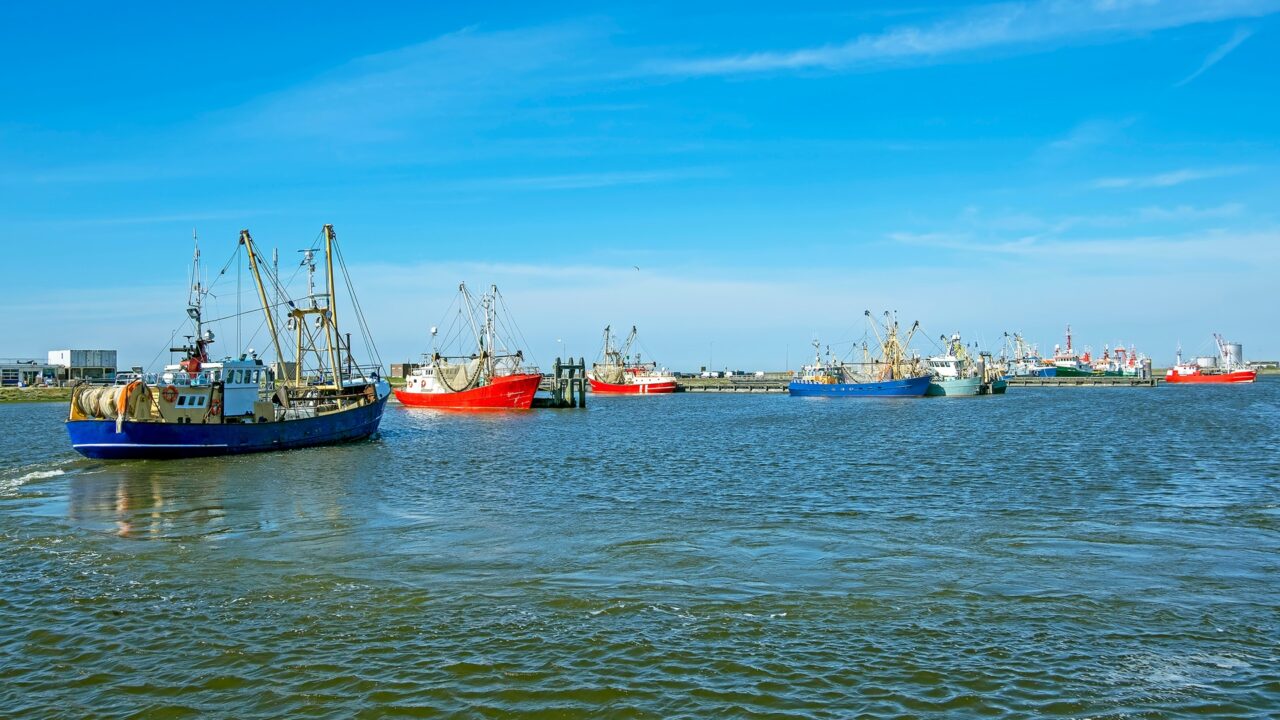Nederlands
English
Deutsch
Français
Dutch shrimps are a real Dutch speciality, comparable in popularity to other traditional Dutch products such as the Hollandse Nieuwe (or soused herring) and Zeeland mussels. The Dutch shrimp, a small grey-brown shrimp, is also known as the common shrimp, grey shrimp or Crangon Crangon. The shrimps can be up to eight centimetres long and have a firm structure. However, the taste is tender, even somewhat sweet and wonderfully creamy.
Are you a buyer looking for the tastiest shrimp for your customers, partners or employees? In this article, we tell you all about the Dutch shrimp and what you should bear in mind with regard to quality when ordering this popular product.
Topics covered in this article include:
As one of the most popular shrimp species in the Netherlands, the Dutch shrimp can nowadays be found in every fish shop and supermarket. The shrimp is usually pre-peeled. The Dutch shrimps that you buy in the store can therefore be consumed immediately.
People who prefer to peel the Dutch shrimp themselves can order unpeeled shrimp per pound from the fishmonger. One pound of unpeeled shrimp will net about 150 grams of shrimp; just enough for a shrimp cocktail for two. Unpeeled Dutch shrimps are available all year round, but the shrimps are the best in late summer until about November. That is when the shrimp are at their thickest.

n most cases, the Dutch shrimps are consumed cold, as a stand-alone dish, in a salad, or on a sandwich that is served with cocktail sauce. The cooked shrimp can also be used as a garnish over the (lobster) sauce and are delicious in a pasta dish.
The Dutch shrimp differs from other shrimps in its delicious, tender and subtle sweet taste. The taste of the foreign ‘pink’ shrimp, on the other hand, is a lot less pronounced. The Dutch shrimp also differs in colour and size from the pink shrimp or pink tail shrimp, which are much pinker and slightly larger and firmer, like the pink Jumbo shrimp.
Dutch shrimps, as the name suggests, are a real Dutch product. Yet the Dutch shrimps that are caught along the North Sea coast do not end up on our plates without taking a major detour. Read all about the journey of the Dutch shrimp from the moment it is caught, here.
Grey shrimps do not only live along the entire Dutch coast, but their habitat also spans from Belgium to Denmark. The tastiest shrimps however, are caught on the Dutch coast – the Dutch shrimps. These shrimps are a bit fatter, taste better, and therefore yield more money.
The Dutch shrimps along the North Sea coast live in a sandy to silty subsoil, alongside an infinite number of crabs and other crustaceans. When fishing, particular attention is paid to the turbidity of the water: the cloudier the water, the greater the chance of catching Dutch shrimp.

To be able to catch the shrimps from the sandy subsoil, trawl nets, also known as shrimp trawls, are used. This is a sustainable fishing method in which the benthic life in the sea is disturbed as little as possible. Crabs and other fish that are caught are immediately sieved on the boat with a special machine and thrown back into the sea alive.
Only the Dutch shrimps stay behind. After sieving, they are directly thrown into a large kettle and cooked immediately on board. By cooking the shrimp this fresh, they have a longer shelf life. From the kettle, they then go into the rinsing machine where they are rinsed completely clean.
For many years, it was the tradition that the women and children of the shrimp fishermen peeled the shrimp by hand at home. Shrimp peeling and Volendam, the charming little fishing village located about 20 minutes from Amsterdam and also the home base of Mooijer-Volendam, were inextricably linked for decades. In every living room in the Doolhof – the oldest part of the centre of Volendam, located behind the famous dike – piles of shrimps were laid out on the table. At an incredibly fast pace and without looking, kilos of shrimp were routinely peeled every day.
As of 1990, it is forbidden to peel shrimp at home due to stricter hygiene requirements. This has also ensured that manual peeling of Dutch shrimps has disappeared from our country: the peeling of shrimps in refrigerated industrial areas where quality and hygiene are closely monitored, together with the high wage costs, subsequently drove up the price to such an extent that people started looking for an alternative solution.
This solution was found in Morocco. To this day, our Dutch shrimps are transported by refrigerated trucks to Morocco, where they are peeled by Moroccan peelers in refrigerated and hygienic working conditions according to strict Dutch standards. Every year, no less than nine million kilograms of Dutch shrimps are transported to Morocco and back.
Despite the many innovations in recent years, it has still not been possible to optimise the current shrimp peeling machines in such a way that the shrimp can be peeled in our own country again. The machines are very expensive, the processing capacity is relatively low, and the small, eight-centimetre long Dutch shrimp proves difficult to peel by machine.
So for the time being, it seems like the Dutch shrimp cannot escape its round trip to Morocco.
But how is the Dutch shrimp peeled? Grab the head of the shrimp in one hand and bend the tail up with the other hand. Then squeeze the body slightly and pull the tail off. Then lightly squeeze the head and take out the shrimp.
Freshly peeled shrimps are of course tastier than when you buy them ready-made. However, peeling shrimp is a very time-consuming job and it can take a while before you get the hang of it.
About 200 shrimp fishermen are currently active in the Netherlands. A shrimp licence is required to fish for shrimp. The number of shrimp licences is limited to the current number of shrimp fishermen. This is done to prevent the shrimp from being overfished. Agreements have been made about this together with the German and Danish fishing industries.
In 2017, this led to MSC certification. An agreement has been reached with these three countries and a management plan has been drawn up for the shrimp fishery. This plan allows the shrimp to grow larger and ensure that there will always be enough shrimp for reproduction. When it is found that too few shrimp are being caught, the fishermen collectively stay ashore, as to ensure a healthy population of Dutch shrimps.
Curious about Mooijer-Volendam’s entire range of Dutch shrimp? Mooijer-Volendam sells a wide range of Dutch shrimp products: various brands and packaging, all provided with the MSC quality mark.
It is also possible to buy various ready-to-use shrimp products, such as the Dutch shrimp croquettes, fresh shrimp salad, breaded shrimp or shrimp balls.
Are you looking for good quality shrimp products? Then you are at the right address. As a shrimp wholesaler, Mooijer-Volendam sets high standards for its quality. Our customers can rely on AAA product quality; something which customers also demand from us.
That is why more and more customers are finding their way to us as a wholesaler for the hotel and catering industry or as a wholesaler for fishmongers, tokos, speciality shops and large retailers.
Curious about all our shrimp products?